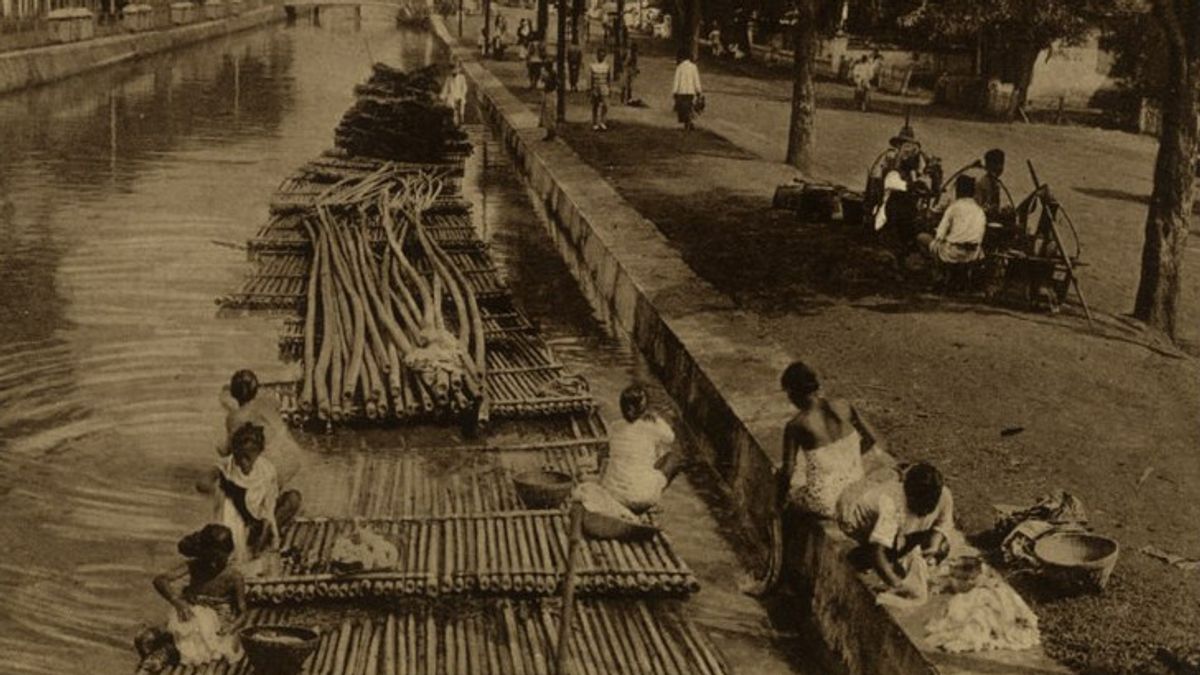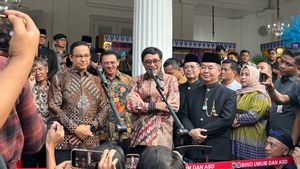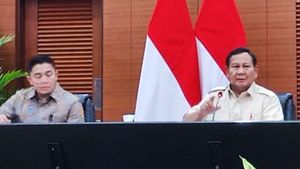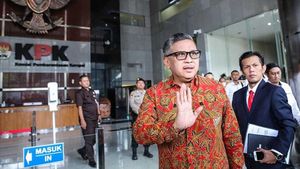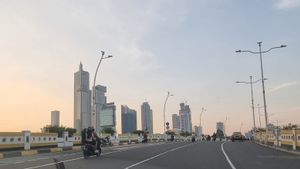JAKARTA - Defecation in the times of Batavia was once considered a common activity. Everyone from different social classes. Dutch or native. Nobles to commoners. At that time no sewer systems such as toilets and latrines were found. However, the custom invites disaster. Disease plague threatens Batavia. The Dutch trading company, VOC, took a stand. The problem of defecating is then specially arranged by them.
The conquest of Jayakarta by the VOC marked the beginning of Dutch colonialism in the archipelago. On the ruins of Jayakarta, the VOC built a new city in 1619. The city was called Batavia. The development of Batavia was carried out with care. The Governor-General of the VOC who served twice (1619-1623 and 1627-1629) Jan Pieterszoon Coen intervened to build it. Coen wanted Batavia to resemble the Dutch city, Amsterdam.
At that time Coen was imagining a fortified city. He immediately built artificial rivers or canals. Its function is none other than economic and aesthetic considerations. At times it became the main means for the transportation of merchandise to supply all needs to Batavia. Likewise, the canals are also used to break up river flows as a strategy to deal with flooding.
Thanks to Coen, Batavia was transformed into a city with the most rivers in the archipelago with 13 major rivers with hundreds of tributaries. Then, Batavia was known as an elite area with a row of luxurious houses on the banks of the river.
“The richest Europeans want a place to live that resembles the tallest houses in their homeland. A few decades after the founding of Batavia, as the city became more and more full, they preferred to build houses on the outskirts of the city, in healthier and more spacious areas. The most prestigious location for many years was the jacatraweg, a road in southeastern Batavia that led to the outer fortress of Jacatra.”

“Johannes Rach who was a well-known painter at that time made a number of paintings of the luxurious vacation homes (Landhuis) in the area, some of which feature baroque architecture, facades, entrances and elaborately ornate gardens, complete with fountains, statues , and ornamental plants that are trimmed into certain shapes. A number of landhuis were built on the banks of canals or rivers so that they were easily accessible by boat, which was the most convenient means of transportation at that time,” said Susan Blackburn in the book Jakarta History 400 Years (2011).
Another advantage of having a house by the river is access to clean water. Times in Batavia the majority is still clear. The clear rivers became the choice for VOC officials to harvest clean water.
So clean, it is said that the water from the river can be drunk directly. Even if it needs to be filtered, then the water from the river does not require a difficult method. The residents of Batavia only used limestone as a filter. Clean water can also be consumed directly.
“In Jakarta Kota, many residents drink river water taken at Jembatan Dua. The water was circulated by boat and sold for a can of kerosene. To clean river water, people are quite able to use a limestone filter or some kind of filter with wooden legs. Under the feet, the filtered water is accommodated in a jar,” it is written in the book Batavia: The Story of Jakarta Tempo Doeloe (1988).
Defecation in the river
Clear rivers are not only used to obtain clean water. The Dutch then began to follow the lifestyle of the natives who used the river for all kinds of daily needs.
They use the river as a place to bathe, wash, and defecate. A series of activities on the river, including defecating and then being adopted by the Dutch in the colony. From high-ranking VOC officials to the lower classes.
This habit quickly spread because the atmosphere in Batavia was still quiet. People confidently carry out the "ritual" defecation without having to fear being disturbed by the surrounding population. All because the buildings in Batavia before the 19th century did not have toilets or toilets.
Toilets and sewer systems were only known in the mid-19th century. Even then it is still limited in Europe. After that, the activity of defecating in the river is increasingly being held. Gradually, the activity of defecating in the river began to be banned by the VOC. The activity actually invites disaster.
Environmental damage and human waste that settles in river flows are the causes of disease outbreaks – malaria, dysentery, and vomiting. Because of this, Batavia changed its face – from being nicknamed the Queen of the East to being the filthy Queen of the East.
The Company also tried to take decisive action in 1630. They issued a regulation prohibiting people from throwing human waste, household waste, and various other types of waste into the rivers and canals that flowed through the city. However, the regulation does not mean that it totally prohibits the issue of defecation. Defecation is allowed, if it reaches 21.00 at night.
“In the period of the 18th century, the Batavian government was already bothered with the problem of garbage and city cleanliness. In Batavia at that time there was no known latrine or bathroom system, human waste was collected in a certain place and at 21.00 at night it was called negenuursbloemen, the waste was dumped by the slaves into rivers or canals.”
"During the day, especially in the dry season, there is a strong smell that comes from rivers, garbage, carcasses left over from construction in rivers or canals that cannot flow anymore due to sedimentation of mud and rising tides that carry sand, thus hindering river flow," explained Restu Gunawan. in the book The Failure of the Canal System: Jakarta Flood Control from Time to Time (2010).

The rule is clearly ineffective. Many Dutch people work around this by first collecting the feces in the plague in the form of a bucket. At home or in the office. After that, every 21:00 the slaves immediately threw the dirt in the river. This means that the river water is still polluted with disease and takes its toll. It was recorded that in 1733 the average number of deaths due to the plague reached two to three thousand people per year.
It was even less effective because the Batavian authorities built a lot of paseban – a place to sit for the wind – under which there were stairs leading to the river. In fact, it is not impossible for the Governor-General of the VOC class to perpetuate the activity of defecating in the river.
One of them was Governor-General Petrus Albertus van der Parra (1761-1775). The governor-general, who is notorious for being corrupt, is believed to often enjoy defecating at the river. For this reason, the regulation that prohibits defecation in the river has never been effective.
“The Governor General's house (now: Toko Merah) is located on Jalan Jacatra and its courtyard is bordered by the river that flows there. On the bank of the river that passes in front of his house there is a small building, a kind of paseban to sit and eat the wind. From the paseban, a ladder is attached to go down to the river. It was through the stairs that the Governor-General descended into the water to bathe. He could have been seen from across the river, but Van Der Parra didn't seem to care. However, it should be remembered, at that time Betawi was still quiet,” concluded Tanu Trh in the book Ketoprak Betawi (2001).
*Read other information about the Dutch colonial period or read other interesting articles from Detha Arya Tifada.
Other MEMORIESThe English, Chinese, Japanese, Arabic, and French versions are automatically generated by the AI. So there may still be inaccuracies in translating, please always see Indonesian as our main language. (system supported by DigitalSiber.id)
